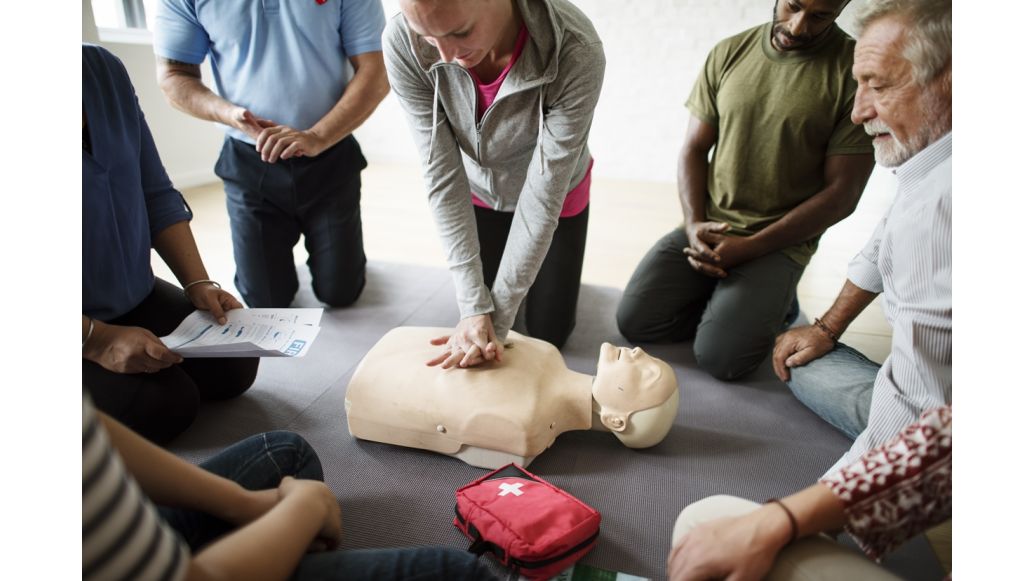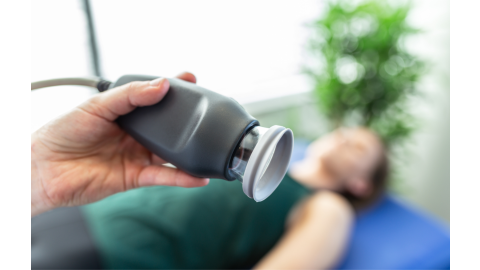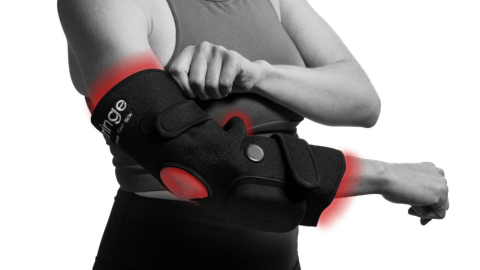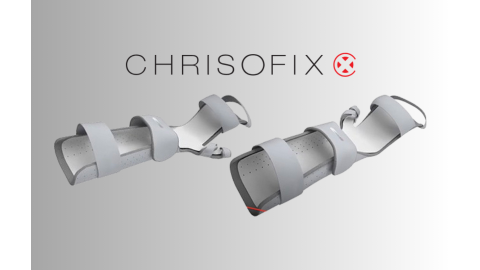This page is for informative purposes only. While this page is a useful guide, become CPR certified and learn the latest guidelines by taking a class near you!
Key CPR Statistics
- There are over 350,000 sudden cardiac arrests a year in the United States. That’s 1 every 2 minutes!
- Without CPR, 92% of cardiac arrest patients die before reaching the hospital.
- Time matters! Every minute without CPR decreases the survival rate by 10%.
When to do CPR or Use an AED
If the person is in cardiac arrest, you should begin performing CPR (cardiopulmonary resuscitation). If an AED is available, send someone to retrieve it and begin using it once available. Cardiac arrest can cause a person to suddenly collapse.
Symptoms include:
- Sudden loss of responsiveness (even if you tap them or loudly ask “Are you okay?”)
- Lack of a normal breathing pattern (the person is only gasping or breathing stops)
How to Do Hands Only CPR
The video above shows the form of CPR recommended by the American Heart Association for bystanders to perform in the event of a cardiac arrest.
Steps for Hands Only CPR
- Call 911
- Begin chest compressions. Place one hand in the center of the chest, place your other hand on top, interlacing your fingers. Then press hard (chest should compress 2 inches) and fast (100-120 beats per minute to the song Stayin’ Alive by the Bee Gees)
- If an automated external defibrillator (AED) is available, ask someone to retrieve it. Then follow the devices instructions, giving CPR as needed.
- Continue compressions until emergency services arrive or you are too exhausted to continue
When and How to Do CPR with Breaths
This video explains when responders should perform CPR with breaths. This method is still recommended by the American Heart Association for bystanders in some situations. Conventional CPR is also still the method that is performed by healthcare providers and those with training.
Steps for CPR with Rescue Breaths
- Call 911 and remember C.A.B. - Compression, Airway, Breathing
- Compression: begin compressions following the steps listed above
- Airway: Open the person’s airway by tilting the head back
- Breathing: Give 2 rescue breaths. Pinch the nose shut (or use a mask that cover it) and completely cover the mouth to form a seal, then breathe
- Alternate the cycle of 30 compressions followed by 2 breaths until help arrives or you are unable to continue
You can carry a CPR Microshield in your purse or bag, so you’re always prepared in case of emergency. It forms a barrier to protect you from the victim’s fluids. Another one-way valve option is a CPR Micromask. Its larger size and unique shape allow the mask to form a seal and makes performing CPR safer and more effective.
How to Use an AED
If an AED is available, you should have someone retrieve it while you begin CPR. An AED administers a shock that can restart the heart or tells you to continue CPR. Follow the AED’s spoken steps to know when to shock the patient or standby. The Zoll AED Plus is unique because it assists you during CPR, evaluating the depth and rate of your chest compressions in real time and telling you to push harder if needed.
Steps for Using an Automatic External Defibrillator
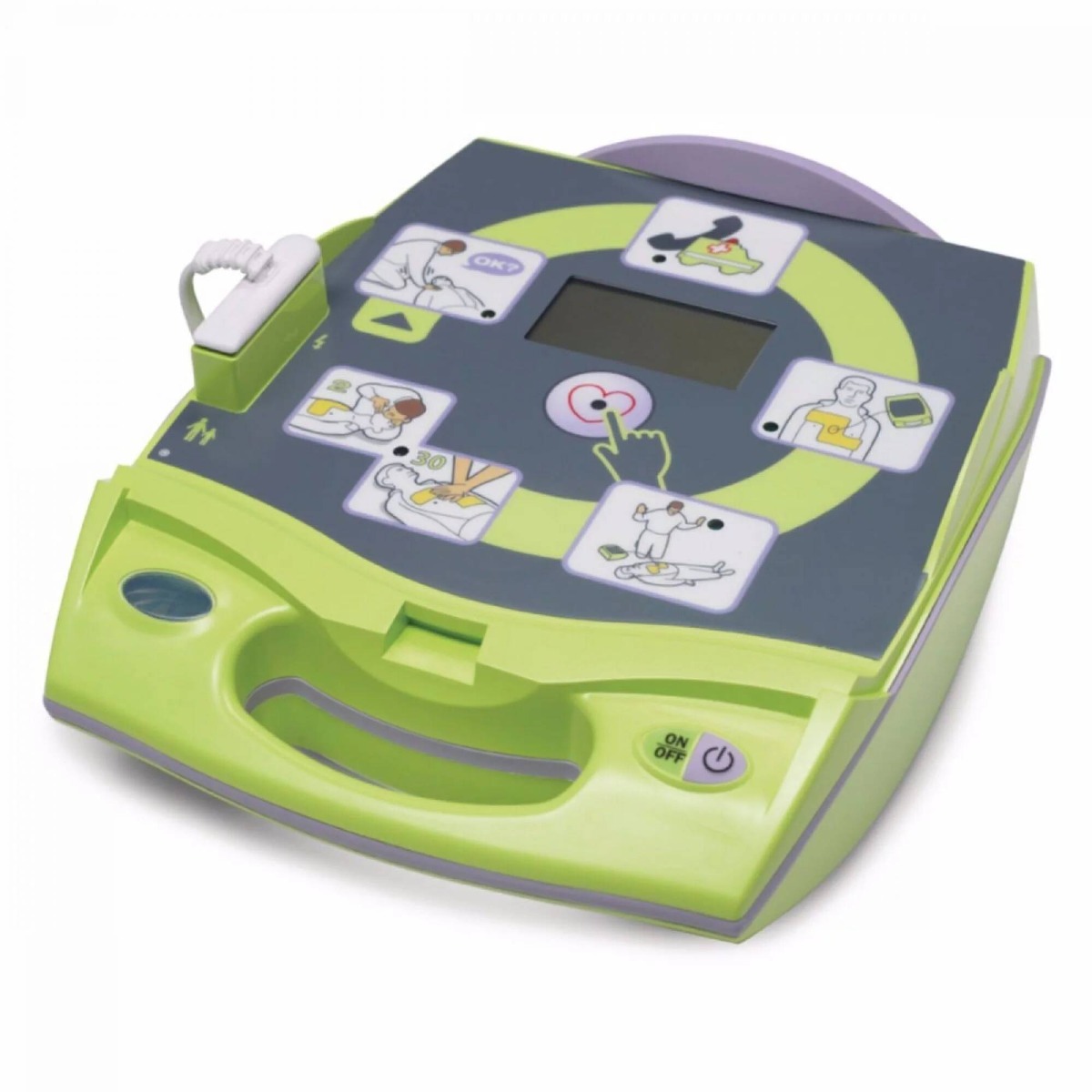
- Call 911
- Open the case and remove the lid. Then turn on the device
- Put on the included gloves
- Use scissors to cut the victim’s shirt open
- Use the included razor to shave the area where the pads will be applied, if needed
- Use clothing or a towel to dry the victim’s chest if they are wet
- Apply the pads, following the images printed on them. One pad should go on the upper chest and the other on the opposite abdominal
- Follow the prompts given by the AED
- If a shock is advised, make sure no one is touching the victim, before pressing the flashing shock button
- If prompted to begin CPR, follow the cycle of 30 compressions and 2 rescue breaths. After five cycles allow the AED to analyze the rhythm again. Continue CPR until help arrives or until the AED announces rhythm restored.
Why Should You Learn CPR
CPR can double or triple survival rates after cardiac arrest. That’s why CPR training is now a high school graduation requirement in 38 states, training 2.3 million students a year.
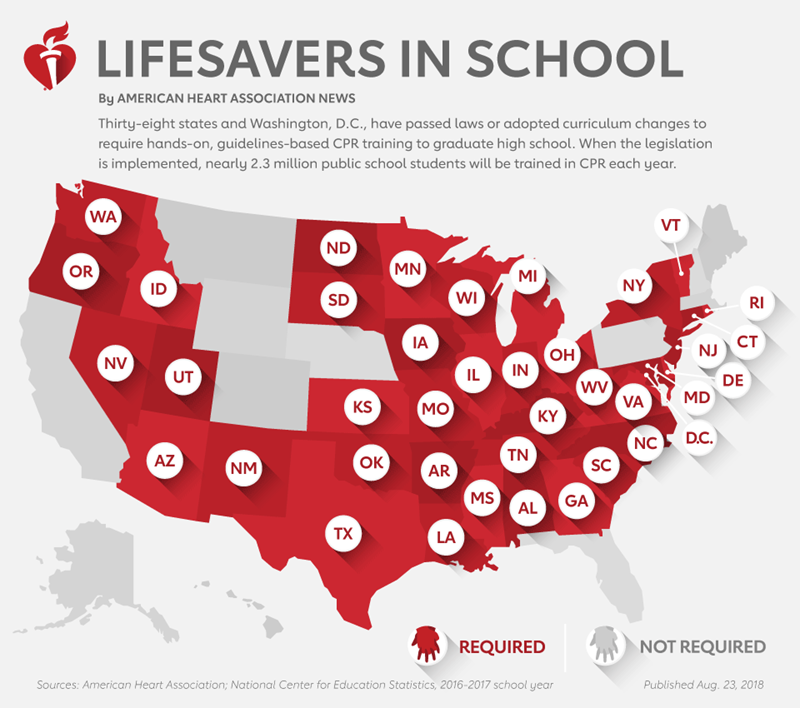
Image source: American Heart Association
Get certified! Take a CPR class for hands-on training and to learn more about how you can save a life.
Why AEDs Should Be Easily Accessible
When a person with cardiac arrest is treated using an AED, their chance of survival increases by 50%. An Olathe West high school student, Brennan Connell, was recently saved thanks to the use of an AED. The baseball pitcher went into cardiac arrest while on the mound. An athletic trainer, nurse, and a doctor who was watching her stepson play, all stepped in to assess the situation and use an AED.
But you don’t need to be a doctor to use an AED. They are designed to walk a lay person through how to use it with step-by-step instructions. Having an AED easily accessible can help you save a life.
CPR Myth Busting: Cough CPR
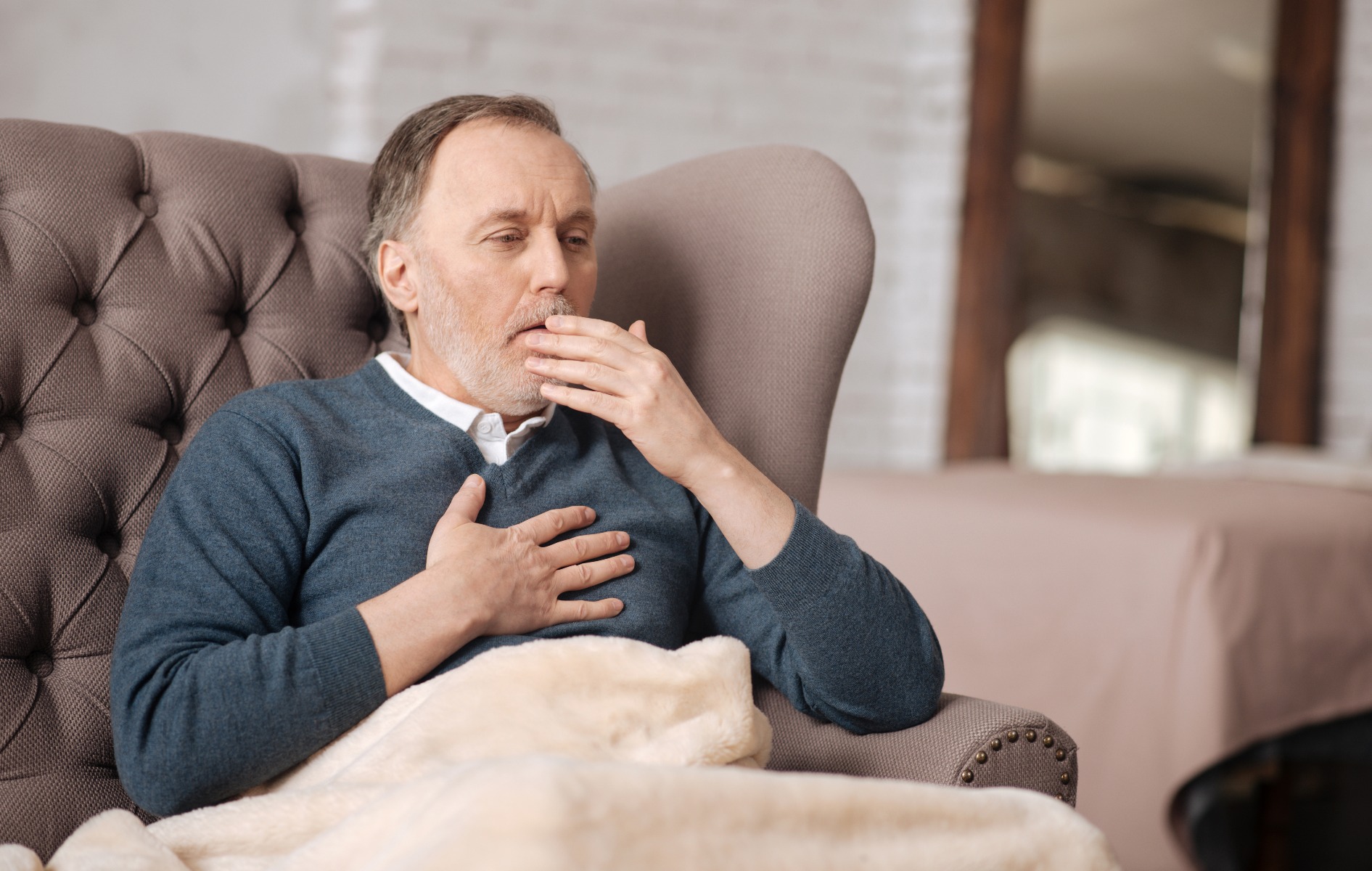
Myth: “Cough CPR” is a procedure that can keep you conscious during a heart attack until help arrives. You need to cough every 2 seconds and breathe deeply to squeeze the heart and keep yourself oxygenated.
FALSE: The American Heart Association does not endorse cough CPR. If you are conscious, you should call 911. And in bystander situations, the victim is usually unconscious and CPR should be administered. In the hospital, under close observation, “cough” CPR may be recommended by a doctor, but it should not be used without a doctor’s approval.
How NOT to Perform CPR
Looking for a laugh? This video from the TV sitcom The Office is the perfect example of how you shouldn’t perform CPR.
CPR Playlist: Songs With Beats to Save Lives
Don’t know the song Stayin’ Alive? Check out this CPR Playlist by New York Presbyterian Hospital!
Save a life with CPR!
References
American Heart Association. (2018). CPR is Key to Survival of Sudden Cardiac Arrest. AHA. Retrieved from https://bit.ly/2DpVRkb
American Heart Association. (2018). CPR Training at School Now Required in 38 States. AHA. Retrieved from https://bit.ly/2ONFccn
American Heart Association. (2017). Cough CPR. AHA. Retrieved from https://bit.ly/2TkEPtf
American Heart Association. (2017). Emergency Treatment of Cardiac Arrest. AHA. Retrieved from https://bit.ly/2Dpy1VL
American Heart Association. (n.d.). CPR Facts and Stats. AHA. Retrieved from https://bit.ly/2zXWXDR
American Red Cross. (n.d.). CPR Steps. American National Red Cross. Retrieved from https://rdcrss.org/2IFRfGL
New York Presbyterian Hospital. (n.d.). Hands Only CPR Everyone Can Save a Life. NYP. Retrieved from https://bit.ly/2POPTNp
O’Brien, Shannon. (2019). Olathe West baseball player miraculously survives after suffering cardiac arrest on the mound. Retrieved from https://bit.ly/2EnD3Si
Medical Disclaimer: The information provided on this site, including text, graphics, images and other material, are for informational purposes only and are not intended to substitute for professional medical advice, diagnosis or treatment. Always seek the advice of your physician or other healthcare professional with any questions or concerns you may have regarding your condition.

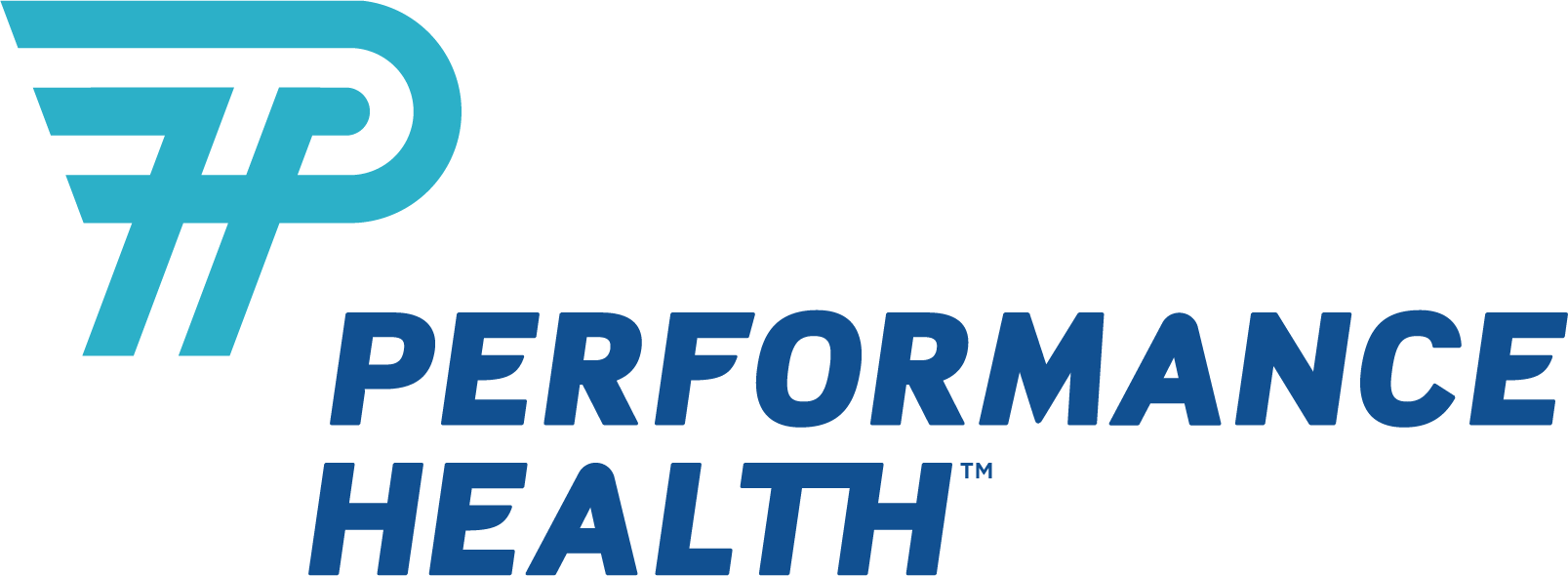






 France
France Australia
Australia